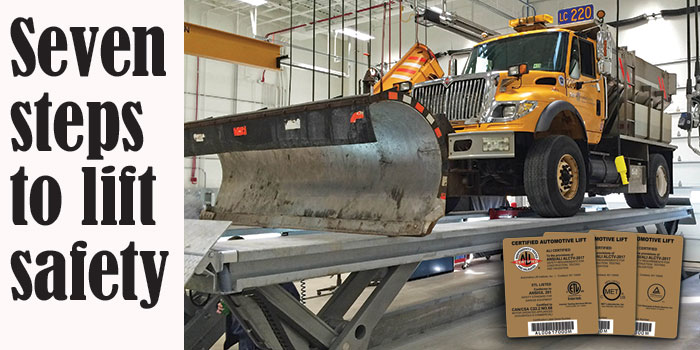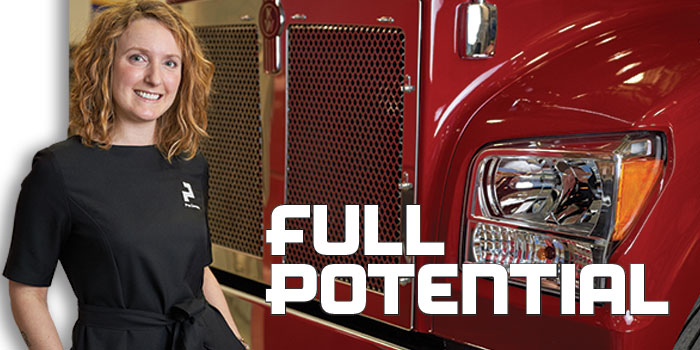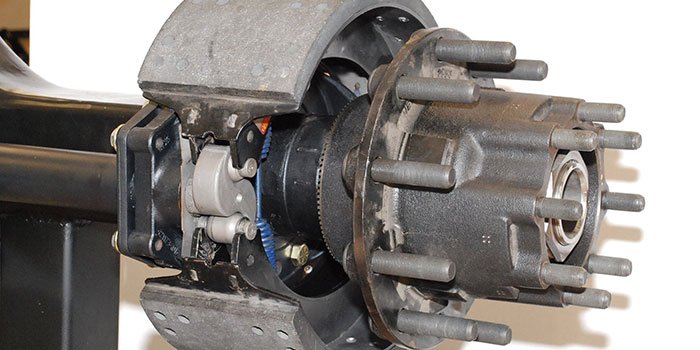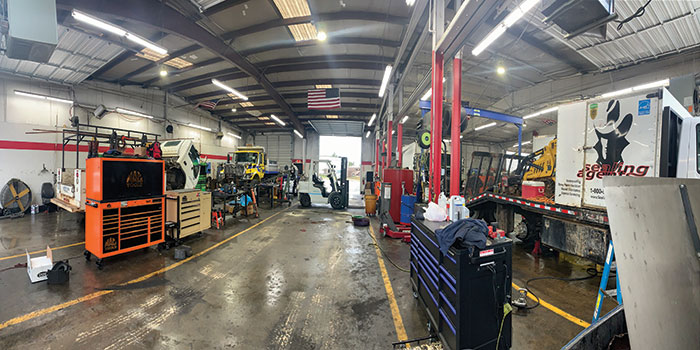High-definition service solutions
Is it time to upgrade your system?

Leveraging parts inventory solutions to keep your heavy-duty shop organized
A well-organized shop is a well-run one, and one of the ways a well-run shop can set itself apart is with a strong inventory management system. Taking care of inventory properly can help you know whether you are stocking too many parts and ensure that you have the parts you need for the typical day’s

Finding your focus in the noisy world of service telematics
Here’s the thing about service data: There’s a lot of it. Remote diagnostic systems throw all sorts of fault codes—by some accounts there are more than 5,000 fault codes that can put a truck on the side of the road. On top of that, they also report plenty of yellow- and green-coded fault codes. (What

How will electric trucks impact your service operation?
One of the biggest potential operational efficiency gain bullet points when OEMs and suppliers talk about electric trucks is the potential for less maintenance compared to diesel trucks. In theory, it might be true. Eliminate the diesel engine and a good amount of service headaches are gone. No oil changes to tackle, coolant leaks to

Keeping the tractor-trailer connection healthy
Connections are made all over the vehicles we service. For the most part, those connections are probably taken for granted until there is trouble.

The importance of ALI certification for heavy-duty lifts
As part of our feature on lift safety in heavy-duty shops, we asked members of the Automotive Lift Institute about how ALI certification is earned, and why this is important. Here’s what Dale Soos, senior project engineer for ALI, and R.W. “Bob” O’Gorman, president of ALI, wrote in response: Not all lifts are manufactured the

A natural gas truck maintenance refresher
Natural gas service varies significantly from diesel engine maintenance in every thing from service intervals to safety procedures. To start, one of the biggest differences in service intervals for Cummins Westport natural gas engines (the only natural gas engine provider in the Class 8 segment) as opposed to diesel is that there’s no “I’ll get

Seven steps to heavy-duty truck lift safety
A heavy-duty shop can be a dangerous place. And that’s especially true when there’s a 25,000-plus-lb. vehicle over your head. Heavy-duty lifts are a crucial part of any shop, but considering the risk involved in raising such loads and working under them, it’s clear that it’s incredibly important to make sure that they are maintained

PacLease Montreal’s Eliane Foley focuses on three areas to boost service operation
By staying on top of daily shop operations, actively working with technicians and other maintenance personnel, and focusing on cost control, PacLease Montreal in St-Laurent, Quebec, is constantly improving customer service, according to Eliane Foley, the shop’s service manager. “Those management skills,” she adds, “are what enable us to do a better job of running

Three inspections to prevent uneven brake wear
Maintenance during the winter months presents unique challenges. Ice, slush, and general muck on the roads take a significant toll on brakes and other exposed components. Any road grit that finds its way into moving parts can result in binding and uneven wear, and there is a greater potential for damage from larger highway debris

Your Fleet. Your Data.
For years, commercial vehicles have been outfitted with data-generating technology. Tracking fleet assets and equipment is a necessity for an efficient and functional operation. The heavy vehicle industry began adopting software and hardware systems as soon as it made sense. Remember when we integrated GPS? That was revolutionary for cutting down transport times. Once the

Shop profile: National Fleet Management is meeting needs
For National Fleet Management’s Billy Black, a proactive approach is key to providing streamlined and effective service for customers.

